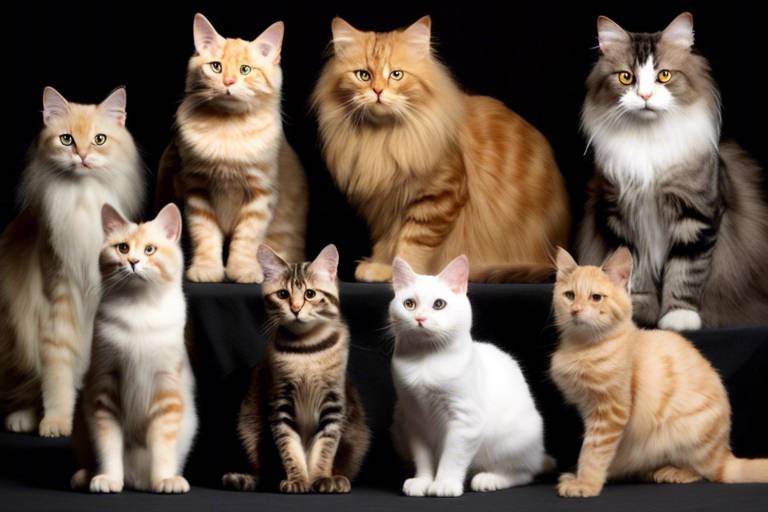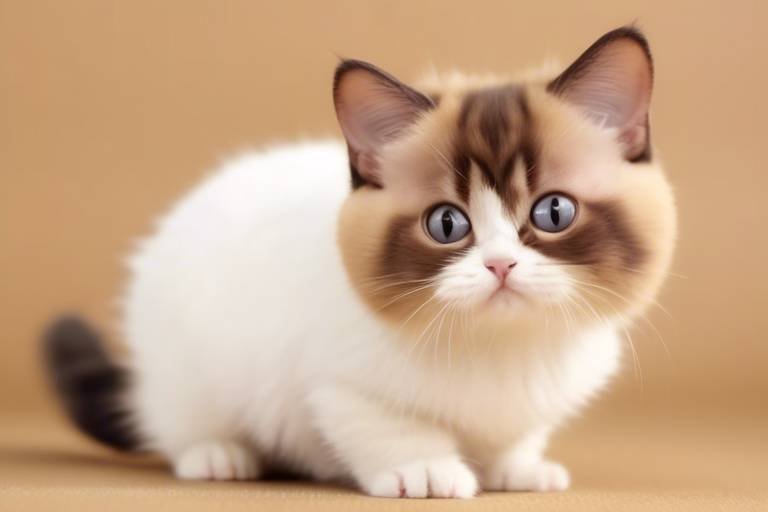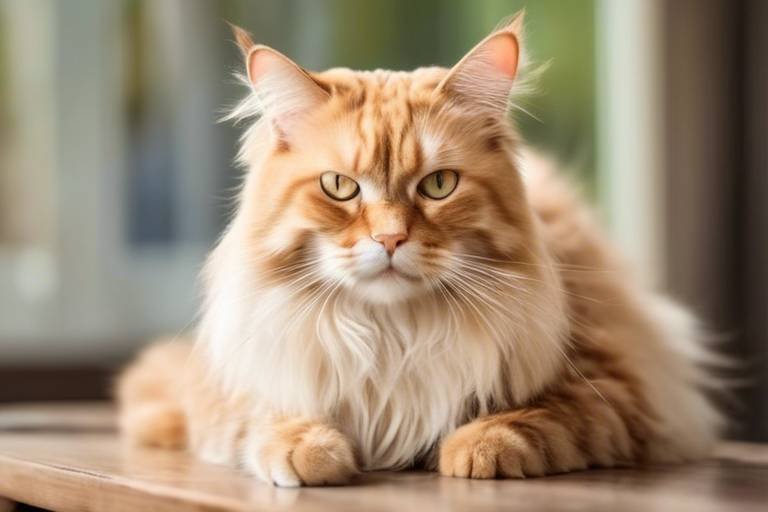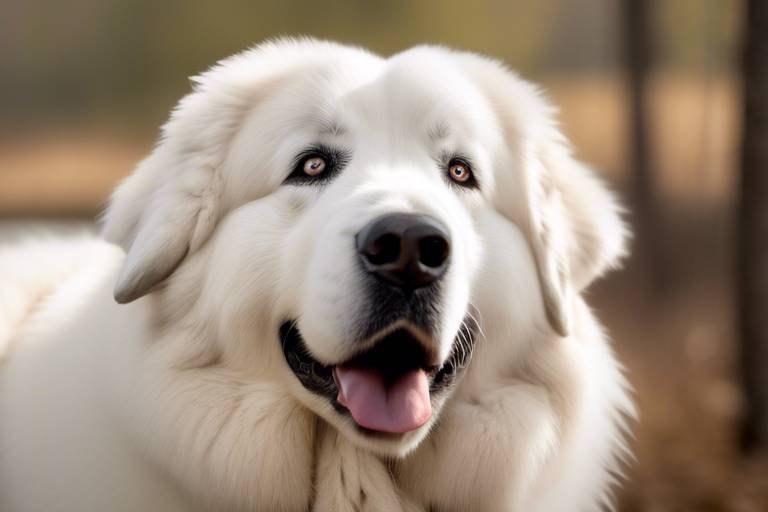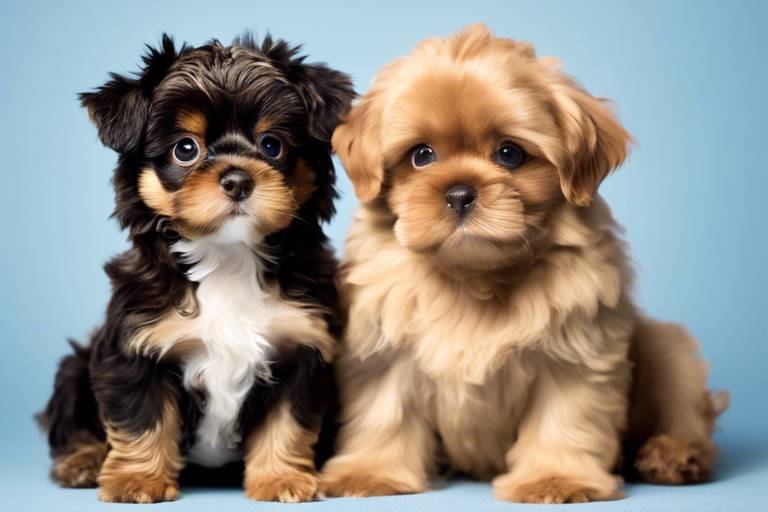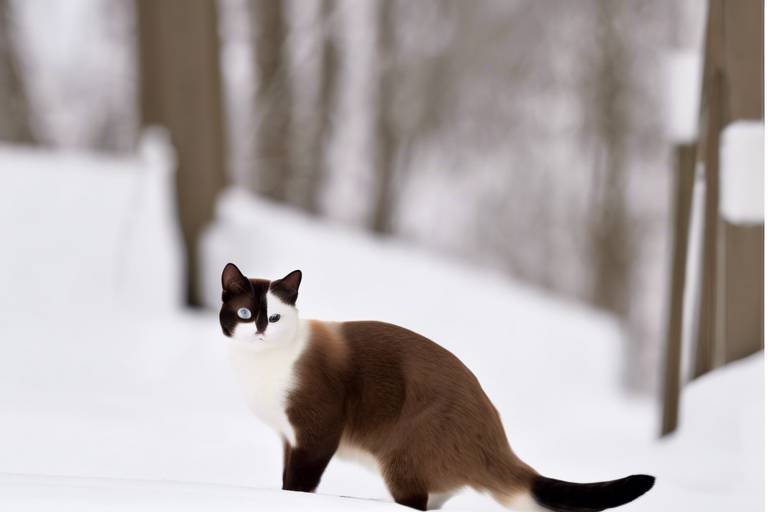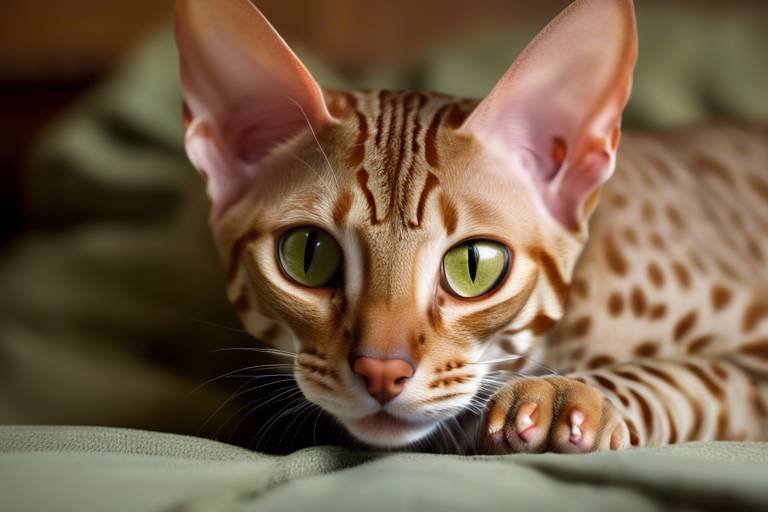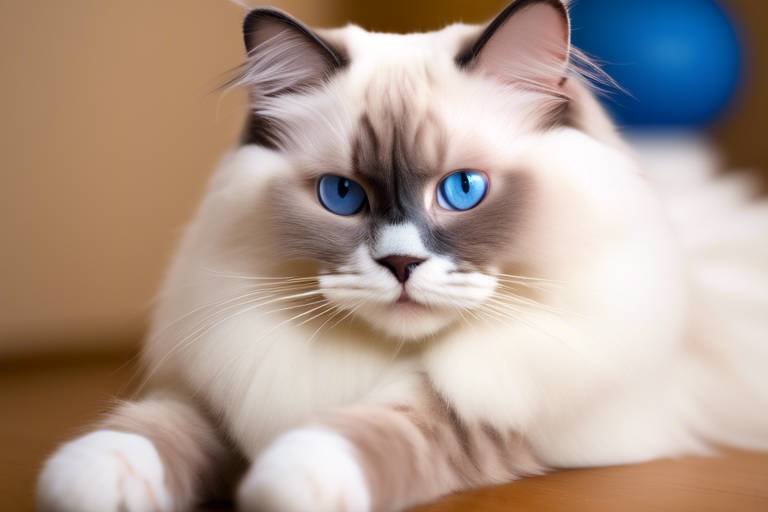Understanding Cat Breeds - What Makes Each Unique
Have you ever wondered why some cats seem to have a personality as big as their fluffy tails, while others are more reserved and quiet? Understanding cat breeds is like unlocking a treasure chest of knowledge that can help you choose the perfect feline companion for your home. Each breed comes with its own set of characteristics, quirks, and care requirements that can significantly influence your experience as a cat owner.
When you think about it, choosing a cat is not just about picking a cute face; it's about finding a personality match that aligns with your lifestyle. For instance, if you're a busy individual who spends most of the day at work, a more independent breed might be ideal. On the other hand, if you’re a social butterfly who loves to entertain guests, a breed known for its sociability and playfulness, like the Siamese, could be your perfect match.
Moreover, understanding the unique traits of each breed can help you prepare for their specific needs. Some cats require extensive grooming due to their long fur, while others might have special dietary needs or health concerns. It’s essential to consider the following factors when exploring different breeds:
- Temperament: Each breed has a distinct personality. Some are more affectionate, while others may be more aloof.
- Grooming Needs: Long-haired breeds require regular grooming, whereas short-haired breeds are often low maintenance.
- Activity Level: Some cats are energetic and playful, needing lots of stimulation, while others are perfectly content to lounge around all day.
- Health Considerations: Certain breeds are prone to specific health issues, making it crucial to do your homework.
As you dive deeper into the world of cat breeds, you'll discover that each one has its own unique history and origin story. For instance, the Maine Coon, known for its friendly disposition, hails from the United States and has a fascinating history as a working cat on farms. On the flip side, the exotic Bengal cat, with its striking appearance, is a product of crossbreeding between domestic cats and the Asian leopard cat, giving it a wild look that many find captivating.
In conclusion, understanding cat breeds is not just a fun trivia pursuit; it’s a vital part of responsible pet ownership. By educating yourself about the different breeds, you can ensure that you choose a cat that fits seamlessly into your life, creating a harmonious environment for both you and your new furry friend. So, are you ready to embark on this journey of discovery and find the cat that will steal your heart?
Here are some common questions people have about cat breeds:
- What is the most popular cat breed? The Domestic Shorthair is often considered the most popular due to its mixed heritage and adaptability.
- Do certain breeds have specific health issues? Yes, some breeds are prone to genetic conditions; for instance, Persians are known to have respiratory issues.
- How can I determine which breed is right for me? Consider your lifestyle, activity level, and the amount of time you can dedicate to grooming and playtime.
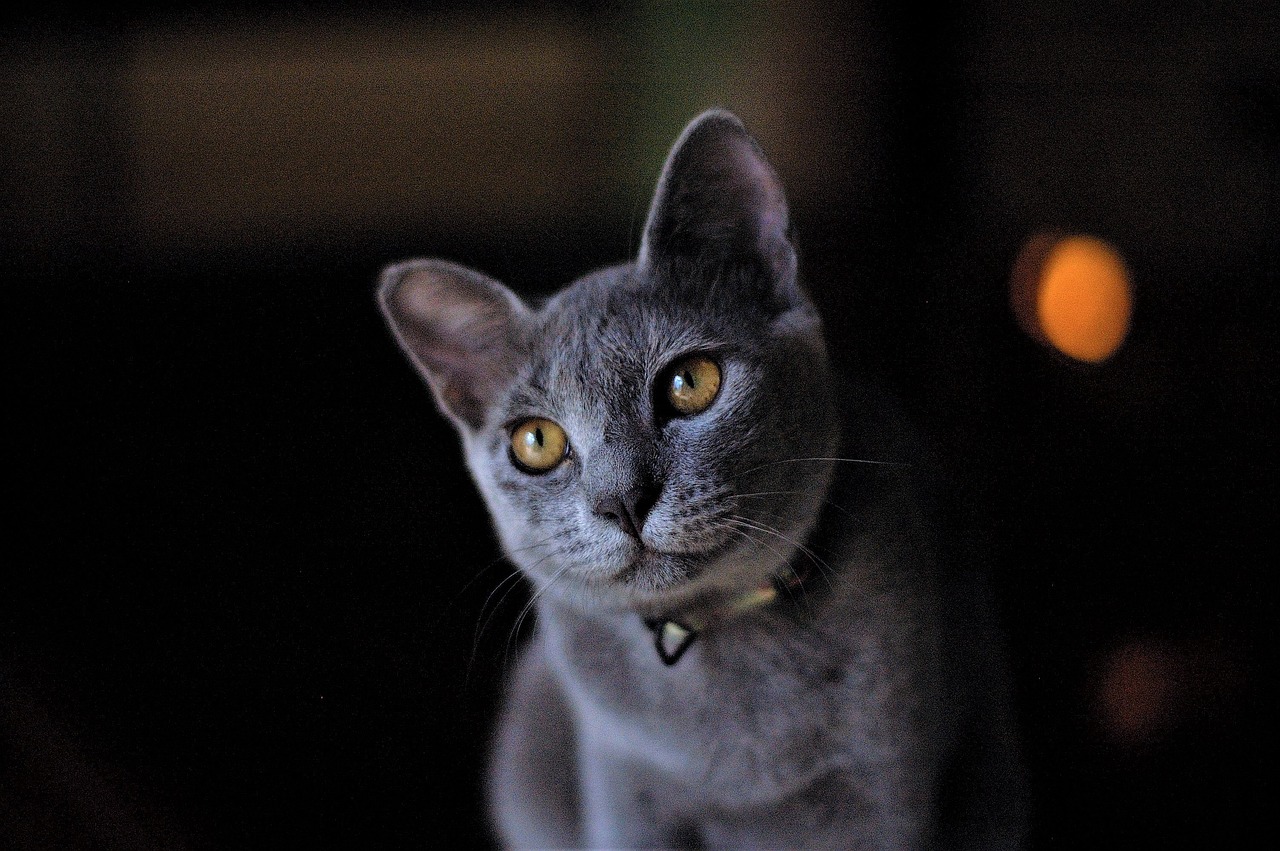
The Importance of Breed Knowledge
When it comes to welcoming a furry friend into your home, understanding cat breeds is absolutely crucial. Why, you ask? Well, each breed comes with its own set of quirks, characteristics, and needs that can significantly influence your experience as a cat owner. Imagine adopting a cat that requires constant playtime when you’re someone who enjoys lounging on the couch with a good book! That’s a recipe for frustration, not to mention a stressed-out kitty.
Different breeds exhibit a variety of behaviors and temperaments. For instance, some cats are naturally more social and vocal, while others might prefer solitude and quiet. This knowledge isn't just trivia; it plays a pivotal role in ensuring that your new pet thrives in your home. By understanding the unique traits of each breed, you can create an environment that caters to their specific needs, which ultimately leads to a happier and healthier feline companion.
Moreover, certain breeds come with specific grooming requirements and potential health concerns. For example, long-haired breeds like the Persian require regular grooming to prevent mats and tangles, while short-haired breeds like the American Shorthair may need less maintenance. Being informed about these factors can save you time, effort, and even unexpected vet bills down the line. Here’s a quick overview of some common grooming needs among different cat breeds:
| Breed | Grooming Needs | Health Concerns |
|---|---|---|
| Siamese | Low - Minimal grooming required | Generally healthy, but prone to dental issues |
| Maine Coon | Moderate - Regular brushing needed | Hip dysplasia and heart conditions |
| Bengal | Low - Short coat requires minimal upkeep | May be prone to certain genetic disorders |
| Scottish Fold | Moderate - Regular brushing to maintain coat | Potential ear and joint issues |
Understanding these elements allows you to not only choose a breed that aligns with your lifestyle but also helps you prepare for the long-term commitment of pet ownership. After all, adopting a cat is not just about the initial excitement; it’s about building a relationship that lasts for years. So, before you make that leap, take the time to educate yourself on the breed you’re considering. You’ll be glad you did!
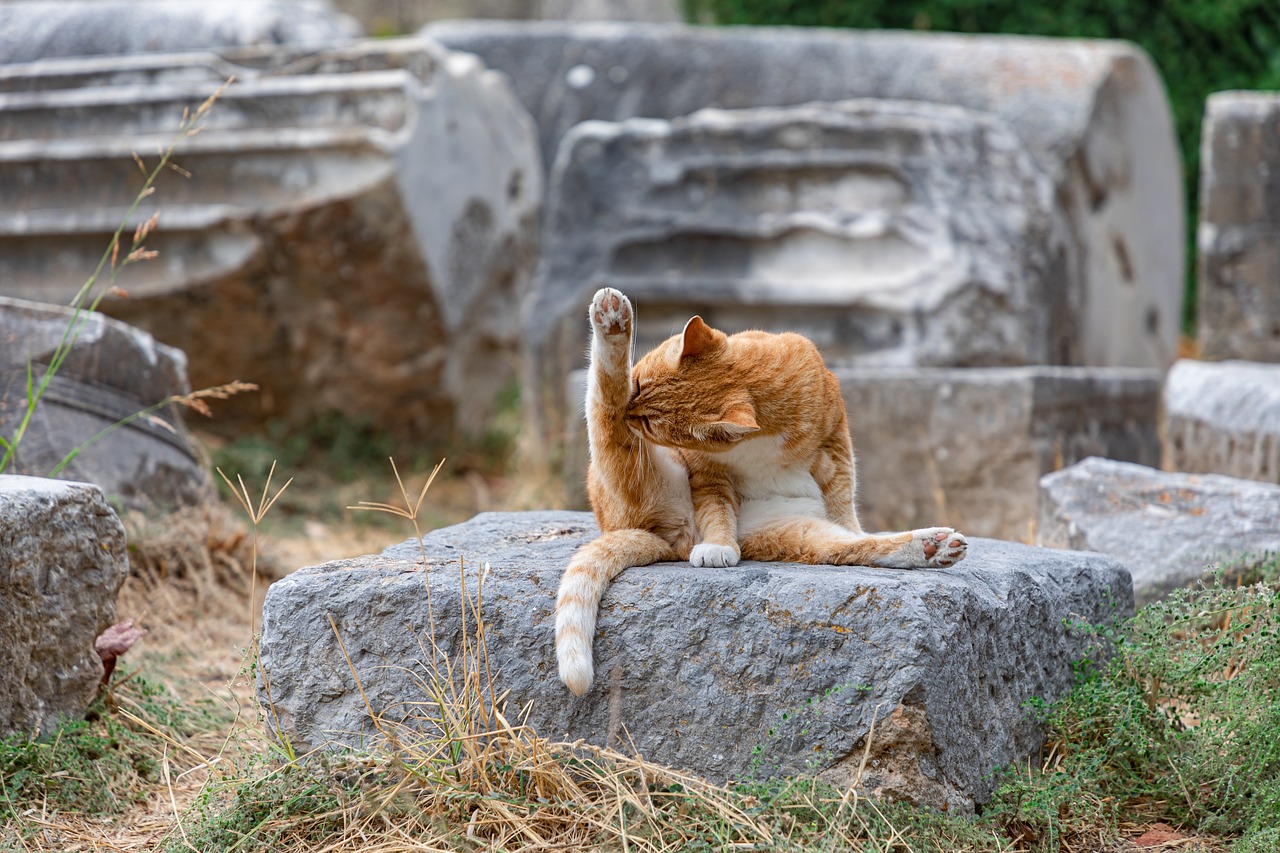
Popular Cat Breeds
When it comes to choosing a feline friend, the world of cat breeds is as diverse as it is fascinating. Each breed has its own unique story and set of characteristics that can make them the perfect companion for different types of households. Whether you're drawn to a breed's striking appearance or their charming personality, understanding what makes each breed special can help you make an informed choice. Let’s dive into some of the most popular cat breeds and discover what makes them stand out.
Siamese cats are not just a pretty face; they are known for their striking appearance with their sleek bodies, blue almond-shaped eyes, and distinctive color points on their ears, face, paws, and tail. But it's their vocal personalities that truly set them apart. These cats are incredibly social and intelligent, often forming strong bonds with their human companions. If you’re looking for a cat that will engage in conversation and follow you around the house, a Siamese might just be your perfect match. They thrive in active households where they can receive plenty of interaction and stimulation.
On the other end of the spectrum, we have the Maine Coon, one of the largest domestic cat breeds. With their tufted ears and bushy tails, these gentle giants are known for their friendly nature. They are often referred to as "gentle giants" due to their affectionate temperament. Maine Coons are adaptable and can comfortably fit into various living situations, whether it's a cozy apartment or a spacious home. Their playful demeanor and love for human interaction make them great companions for families and individuals alike.
Persian cats are the epitome of elegance. With their long, luxurious fur and sweet, flat faces, they have a regal presence. However, don’t let their beauty fool you; they require a significant amount of grooming to keep their coats in pristine condition. Persians are known for their calm and laid-back personalities, making them perfect for quieter households where they can lounge around and soak up the affection of their owners. If you’re willing to invest time in grooming, a Persian can be a wonderfully loving addition to your family.
Next up is the British Shorthair, a breed that is as sturdy as it is charming. Known for their round faces and dense coats, these cats have a plush appearance that many find irresistible. They are typically easygoing and independent, which makes them suitable for busy households. British Shorthairs enjoy companionship but are also perfectly content to entertain themselves. This breed is ideal for those who want a cat that is affectionate yet doesn’t require constant attention.
| Breed | Characteristics | Temperament |
|---|---|---|
| Siamese | Striking appearance, vocal | Social, intelligent |
| Maine Coon | Large size, tufted ears | Friendly, adaptable |
| Persian | Long fur, flat face | Calm, affectionate |
| British Shorthair | Round face, dense coat | Easygoing, independent |
Understanding these popular cat breeds can help you find the right match for your lifestyle. Each breed has its own unique traits that cater to different personalities and living situations. Whether you want a chatty Siamese, a cuddly Maine Coon, a regal Persian, or a laid-back British Shorthair, there’s a perfect feline friend waiting for you. So, what are you waiting for? Start exploring these amazing breeds today!
Q: What is the most popular cat breed?
A: The Siamese cat is often considered one of the most popular breeds due to its striking looks and engaging personality.
Q: Are Maine Coons good with children?
A: Yes, Maine Coons are known for their friendly nature and are typically great with children, making them an excellent family pet.
Q: How much grooming do Persian cats require?
A: Persian cats require daily grooming to prevent matting and to keep their long fur healthy.
Q: Do British Shorthairs need a lot of attention?
A: British Shorthairs are independent and can entertain themselves, but they do enjoy companionship and affection from their owners.
Siamese Cats
Siamese cats are truly a spectacle to behold, renowned for their striking appearance and vocal personalities. With their sleek bodies, striking blue almond-shaped eyes, and distinctive color points on their ears, face, paws, and tail, they are often considered one of the most beautiful cat breeds. But there’s much more to these feline companions than just looks. Siamese cats are known for their social nature and intelligence, making them exceptional companions for those who enjoy interaction and engagement.
These cats thrive on human interaction and are often described as "dog-like" in their loyalty and affection. They are not the type of cat that will sit quietly in the corner; instead, they are likely to follow you around the house, seeking attention and companionship. This breed is particularly well-suited for active households where they can receive the social stimulation they crave. If you’re someone who enjoys talking and playing with your pets, a Siamese cat will fit right into your lifestyle.
Moreover, Siamese cats are highly intelligent and can be trained to perform tricks or even walk on a leash. Their playful nature means they require ample stimulation; therefore, providing them with toys, scratching posts, and interactive play sessions is essential. They are also known for their vocalizations, often expressing their needs and desires through a range of sounds. This can be endearing, but it also means that they require a patient owner who can handle their chatty demeanor.
In terms of care, Siamese cats have relatively low grooming needs due to their short coat. However, regular brushing can help reduce shedding and keep their coat shiny. It's important to provide them with a balanced diet and regular veterinary check-ups to ensure they remain healthy. Siamese cats are generally healthy, but they can be prone to certain genetic conditions, so being aware of these can help in managing their health effectively.
In summary, if you’re considering adding a Siamese cat to your family, be prepared for a lively, affectionate, and intelligent companion that will undoubtedly bring joy and entertainment into your life. They are not just pets; they are family members who thrive on love, interaction, and play.
- Are Siamese cats good with children? Yes, Siamese cats tend to be very affectionate and can get along well with children, making them great family pets.
- Do Siamese cats require a lot of attention? Absolutely! They are very social and need regular interaction to stay happy and healthy.
- How much grooming do Siamese cats need? They have short coats that require minimal grooming, but regular brushing can help reduce shedding.
- Are Siamese cats prone to any health issues? While generally healthy, Siamese cats can be predisposed to certain genetic conditions, so regular vet check-ups are important.
Maine Coons
Maine Coons are one of the most beloved cat breeds, and it’s easy to see why! These magnificent felines are not only known for their impressive size but also for their gentle personalities. Originating from the United States, specifically Maine, these cats have a rich history that adds to their charm. Imagine a cat that feels like a small dog; that’s what you get with Maine Coons! They are often referred to as the "gentle giants" of the cat world, and their friendly demeanor makes them perfect companions for families and individuals alike.
Physically, Maine Coons are striking. They can weigh anywhere from 10 to 25 pounds, with males typically being larger than females. Their long, bushy tails and tufted ears give them a unique appearance that sets them apart from other breeds. Not to mention, their luxurious fur is not just for show; it helps them stay warm in colder climates. This breed’s coat can come in a variety of colors and patterns, making each Maine Coon a unique masterpiece!
But it's not just their looks that capture hearts; Maine Coons are also known for their playful and affectionate nature. They love to interact with their human companions and often follow them around the house, just like a loyal dog. They are also quite intelligent, which means they can be trained to do tricks or even walk on a leash! This breed thrives on social interaction, so if you're looking for a cat that will keep you company and engage with you, a Maine Coon could be the perfect fit.
However, it’s essential to consider their care needs. Maine Coons have a thick, water-repellent coat that requires regular grooming to prevent matting. Brushing them a couple of times a week is usually sufficient, but during shedding season, you might need to step up your grooming game. Additionally, their playful nature means they need plenty of stimulation, so providing toys, climbing structures, and interactive playtime is crucial for their happiness.
In summary, if you’re considering welcoming a Maine Coon into your home, prepare for a loving and entertaining companion that will quickly become a cherished member of your family. With their unique combination of size, beauty, and personality, Maine Coons truly are a breed apart!
- Are Maine Coons good with children? Yes, Maine Coons are known for their friendly and gentle nature, making them excellent companions for children.
- Do Maine Coons require a lot of grooming? While they have a thick coat that needs regular brushing, they are relatively low-maintenance compared to other long-haired breeds.
- How much exercise do Maine Coons need? Maine Coons are active cats and enjoy playtime. Regular interactive play is essential to keep them healthy and happy.
- What is the lifespan of a Maine Coon? On average, Maine Coons live between 12 to 15 years, but with proper care, some can live even longer.
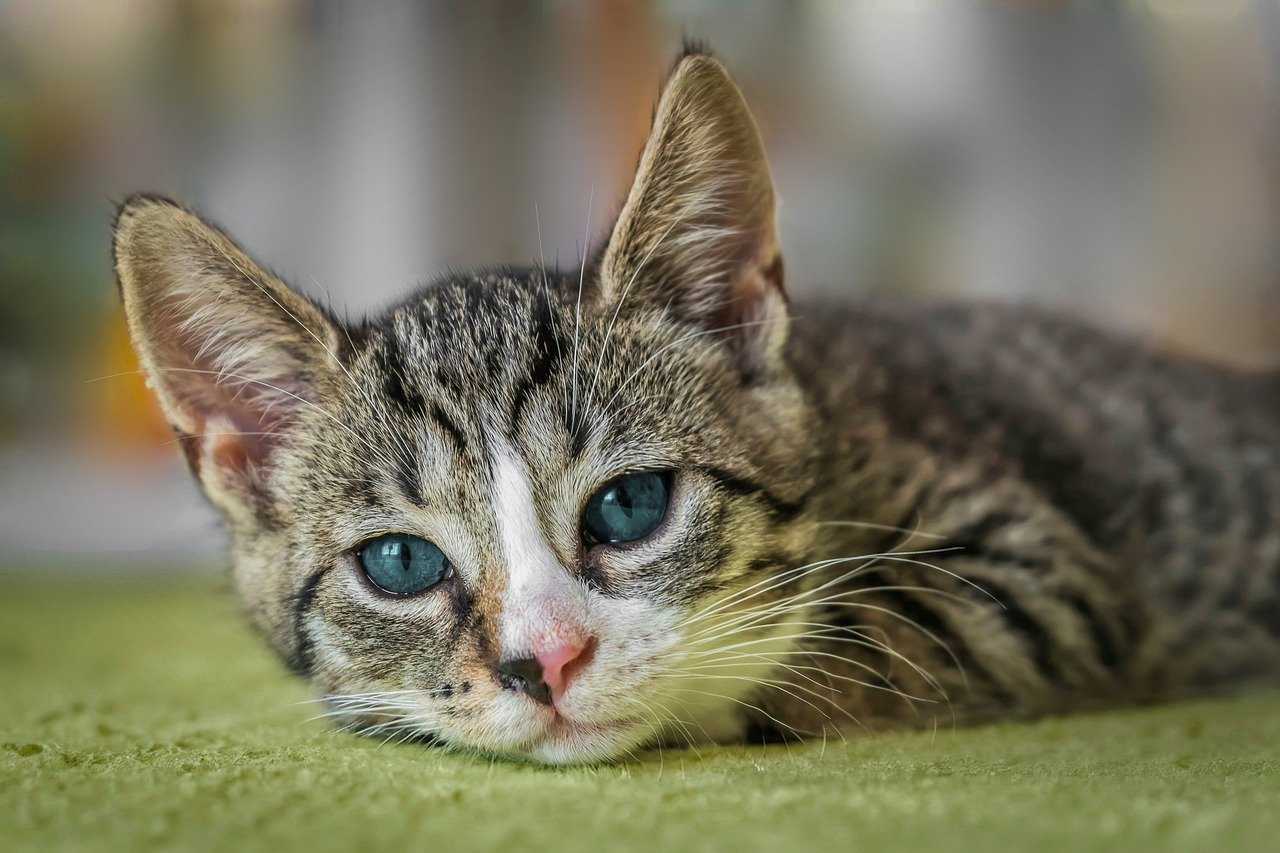
Rare and Exotic Breeds
Exploring rare and exotic cat breeds can be a thrilling adventure for any cat lover. These breeds often come with a rich history and unique features that set them apart from the more common feline companions. Each breed has its own story, and understanding these differences can help potential owners appreciate the beauty and complexity of these extraordinary animals.
One of the most captivating aspects of rare breeds is their distinctive appearance. For instance, the Bengal cat is renowned for its stunning coat, which resembles that of a wild leopard. With a playful and energetic personality, Bengals require a lot of stimulation and interaction. They thrive in environments where they can climb, explore, and engage in playful antics. Their exotic looks paired with a high-energy demeanor make them a favorite for active households.
Another fascinating breed is the Scottish Fold, easily recognizable by its unique folded ears. This breed not only boasts an adorable appearance but also has a gentle and affectionate temperament. Scottish Folds are known for their love of human companionship, making them excellent pets for families. They enjoy being involved in family activities and often seek out attention and cuddles.
However, owning a rare breed often comes with specific care requirements. For example, Bengals need plenty of exercise, which could involve interactive toys, climbing trees, and even scheduled playtime. On the other hand, Scottish Folds, while affectionate, may face health issues related to their ear structure. Understanding these needs is crucial for ensuring a happy and healthy life for your exotic feline.
When considering a rare breed, it's essential to research their health concerns, grooming requirements, and overall temperament. Some breeds may require specialized diets or regular vet visits due to hereditary health issues. Therefore, potential owners should be prepared for the commitment that comes with these unique cats.
| Breed | Appearance | Temperament | Care Needs |
|---|---|---|---|
| Bengal | Spotted coat resembling a leopard | Energetic, playful, and social | High activity level, needs stimulation |
| Scottish Fold | Unique folded ears, round face | Affectionate, calm, and gentle | Regular vet check-ups for health monitoring |
In conclusion, rare and exotic cat breeds offer a unique blend of beauty, personality, and care requirements. By understanding the distinctive traits of breeds like the Bengal and Scottish Fold, potential cat owners can make informed decisions about which breed fits their lifestyle. Whether you’re drawn to the wild appearance of a Bengal or the sweet disposition of a Scottish Fold, these exotic cats can bring a special charm to any home.
- What is the most exotic cat breed? While "exotic" can be subjective, breeds like the Bengal and Savannah are often considered among the most exotic due to their wild ancestry and unique appearances.
- Do rare breeds require special care? Yes, many rare breeds have specific health concerns and grooming needs that must be addressed to ensure their well-being.
- Are exotic cats good with children? It depends on the breed. Breeds like the Scottish Fold are generally good with children, while others may require more supervision.
Bengal Cats
Bengal cats are truly a sight to behold, with their exotic leopard-like spots and sleek, muscular build. Originating from a cross between domestic cats and the Asian leopard cat, these felines bring a wild flair to the world of house pets. But it's not just their looks that make them special; their energetic personalities and playful nature are equally captivating. If you're considering adding a Bengal to your family, brace yourself for a lively companion who loves to explore and engage. They thrive on interaction, so be prepared to spend quality time playing with them. Think of them as your furry little athletes, always ready for a game of chase or a leap into the air!
One of the most fascinating aspects of Bengal cats is their intelligence. These cats are not only quick on their feet but also quick on the uptake! They can learn tricks and commands, making them one of the more trainable breeds. Imagine having a cat that can fetch or even walk on a leash! However, with great intelligence comes the need for mental stimulation. If left bored, Bengal cats can become mischievous, turning your home into their personal playground. To keep them entertained, consider providing a variety of toys, climbing structures, and even puzzle feeders that challenge their minds.
When it comes to care, Bengal cats have some specific needs that potential owners should be aware of. They require a balanced diet that supports their active lifestyle. High-quality cat food rich in protein is essential to keep them healthy and energetic. Additionally, regular vet check-ups are a must to monitor their health, as Bengals can be prone to certain genetic conditions. It's also important to maintain their grooming routine. While their short coat requires less maintenance than long-haired breeds, regular brushing can help reduce shedding and keep their fur looking sleek and shiny.
In summary, Bengal cats are an extraordinary breed that combines beauty, intelligence, and playfulness. They are perfect for families or individuals who can provide the attention and activity they crave. If you're ready for a fun and interactive pet, a Bengal cat might just be the perfect fit for you!
- Are Bengal cats good with children? Yes, Bengal cats are generally good with children, especially if they are raised together. They enjoy playtime and can be very affectionate.
- Do Bengal cats require a lot of exercise? Absolutely! They are very active and need plenty of playtime and stimulation to keep them happy and healthy.
- How much grooming do Bengal cats need? Bengals have a short coat that requires minimal grooming. Regular brushing will help reduce shedding.
- Are Bengal cats vocal? Yes, they tend to be quite vocal and will often communicate with their owners through a variety of sounds.
Scottish Fold
The is a breed that captures hearts with its distinctive appearance and charming personality. One of the most striking features of this breed is its unique folded ears, which give it an almost owl-like look. This characteristic is a result of a natural mutation, making Scottish Folds stand out in any crowd. But it's not just their looks that make them special; their sweet disposition and affectionate nature make them wonderful companions for families and individuals alike.
Scottish Folds are known for their playful and gentle demeanor. They enjoy being around people and often form strong bonds with their owners. This breed is typically very sociable, thriving in environments where they can interact with family members and even other pets. Their playful antics can bring joy to any household, as they love to chase after toys and engage in interactive play. However, it’s important to note that they also appreciate their quiet time, often curling up next to their humans for a cozy nap.
When it comes to care, Scottish Folds are relatively low-maintenance. They have a short to medium coat that requires regular brushing to keep it looking its best. A weekly grooming session is usually sufficient to remove loose hair and prevent matting. Additionally, these cats are generally healthy, but potential owners should be aware of certain genetic issues that can arise due to their unique ear structure. Regular veterinary check-ups are essential to monitor their health and address any concerns early on.
In terms of training, Scottish Folds are intelligent and eager to please, making them relatively easy to train. They can learn basic commands and tricks, and they often enjoy participating in interactive games that stimulate their minds. This breed is also known for its curious nature, so providing a safe environment where they can explore is crucial. Cat trees, scratching posts, and interactive toys can keep them engaged and happy.
In summary, the Scottish Fold is not just a pretty face; it's a breed that offers a delightful combination of affection, playfulness, and adaptability. Whether you're a busy family or a single person looking for a loving companion, this breed can fit seamlessly into your lifestyle. Just remember to provide them with the love, attention, and care they deserve, and you'll have a loyal friend for years to come.
- Do Scottish Folds require special care for their ears? While their folded ears are a unique feature, they don't require special care beyond regular cleaning to prevent wax buildup.
- Are Scottish Folds good with children? Yes, they are typically very gentle and affectionate, making them great companions for kids.
- What is the average lifespan of a Scottish Fold? With proper care, Scottish Folds can live between 12 to 15 years.
- Do they get along with other pets? Generally, Scottish Folds are social and can get along well with other cats and even dogs if introduced properly.
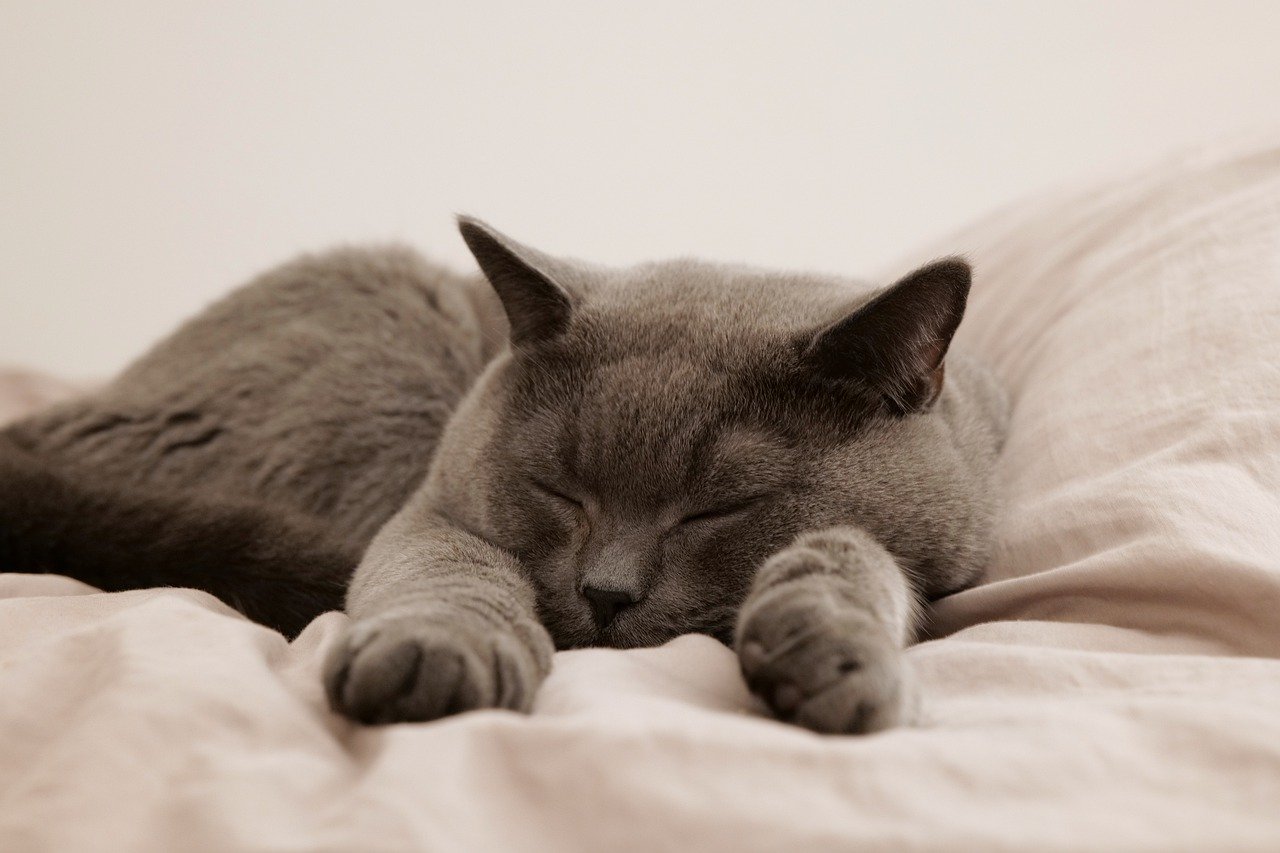
Choosing the Right Breed for Your Lifestyle
Choosing the right cat breed is like finding the perfect pair of shoes; it needs to fit your life and make you feel good! Before you rush into adopting a furry friend, take a moment to reflect on your daily routine, living situation, and personal preferences. Just like people, cats have their own personalities and needs that can greatly influence how well they adapt to their new home. For instance, if you are a busy professional who spends most of the day at work, a more independent breed might be your best bet. On the other hand, if you’re a stay-at-home parent or someone who loves to engage and play, consider a breed that thrives on interaction.
When evaluating potential breeds, think about the energy levels of both you and the cat. Some breeds are like little dynamoes, always on the move and ready for playtime, while others prefer lounging around like a lazy Sunday afternoon. For example, if you love to run or play fetch, a breed like the Bengal or Siamese might be a perfect match. However, if you prefer a more relaxed lifestyle, breeds like the British Shorthair or Scottish Fold could be ideal companions, enjoying your company without demanding constant activity.
Additionally, consider your living space. If you live in a small apartment, a breed that doesn’t require a lot of room to roam might be more suitable. Many cats can adapt to smaller spaces, but breeds like Maine Coons or Ragdolls may appreciate having more space to explore. Understanding the grooming needs of a breed is also essential. Some cats, such as Persians, require regular grooming sessions, while others, like the American Shorthair, are relatively low-maintenance. You wouldn’t want to adopt a long-haired beauty if you’re not prepared for daily brushing!
In conclusion, selecting the right breed for your lifestyle is a crucial step in ensuring a harmonious relationship with your new feline friend. Take the time to assess your daily routine, energy levels, and living conditions. By doing so, you will not only enhance your life but also provide a loving and suitable environment for your new companion. Remember, the goal is to create a bond that enriches both your lives!
- What is the most low-maintenance cat breed? Breeds like the American Shorthair and British Shorthair are known for their easy grooming and adaptable nature.
- How do I know if a cat is right for my family? Consider the breed's temperament, energy level, and grooming needs. Researching and meeting the cat beforehand can help you make an informed decision.
- Can I have a cat if I work full-time? Yes, but consider adopting a more independent breed or getting two cats to keep each other company while you're away.
- Are there hypoallergenic cat breeds? Yes, breeds like the Siberian and Balinese are known to produce fewer allergens.
Active vs. Calm Breeds
When it comes to choosing a cat, one of the most critical factors to consider is whether you want an active or a calm breed. This decision can significantly impact your home environment and your overall experience as a cat owner. Active breeds, like the Bengal or the Siamese, are often bursting with energy and require ample stimulation. They love to play, climb, and explore, making them perfect for families or individuals who lead a lively lifestyle. Imagine having a furry little tornado zooming around your living room, keeping you entertained and on your toes. If you thrive on activity and enjoy engaging with your pet, these breeds might be the perfect fit for you.
On the other hand, calm breeds such as the Maine Coon or the Scottish Fold offer a more laid-back vibe. These cats tend to be more relaxed, often enjoying cozy afternoons curled up on the couch with their owners. They are perfect companions for those who prefer a quieter home or who may not have the time to engage in extensive play sessions. Imagine coming home after a long day to a gentle purring companion who simply wants to snuggle up next to you. Calm breeds can provide a sense of peace and comfort, making them ideal for seniors or busy professionals.
To help you understand the differences better, here's a quick comparison of the traits commonly associated with active and calm breeds:
| Trait | Active Breeds | Calm Breeds |
|---|---|---|
| Energy Level | High | Low to Moderate |
| Playfulness | Very Playful | Occasional Play |
| Social Interaction | Needs Regular Interaction | Enjoys Affection but is Independent |
| Space Requirements | Needs Space to Roam and Play | Can Adapt to Smaller Spaces |
Ultimately, the choice between an active or calm breed should align with your lifestyle and preferences. If you have the time and energy to engage with a spirited feline, an active breed can bring joy and excitement into your life. However, if you prefer a more tranquil companion who enjoys lounging and occasional play, a calm breed may be the way to go. Remember, the right match will not only enhance your life but also ensure that your cat thrives in its new home.
- What are the best active cat breeds? Some popular active breeds include the Bengal, Siamese, and Abyssinian.
- Which cat breeds are known for being calm? Maine Coons, Scottish Folds, and Ragdolls are typically known for their calm demeanor.
- How can I keep an active cat entertained? Providing interactive toys, climbing trees, and regular playtime can help keep an active cat stimulated.
- Do calm breeds require less care? While calm breeds may require less playtime, they still need regular grooming and attention to thrive.
Grooming and Care Requirements
When it comes to choosing a cat breed, one of the most important factors to consider is the associated with that breed. Each cat has its own unique needs, and understanding these can make a huge difference in your experience as a cat owner. For instance, some breeds, like the Persian, have long, luxurious fur that requires daily brushing to prevent mats and tangles. On the other hand, short-haired breeds such as the American Shorthair may only need a weekly brush to keep their coat healthy and shiny.
Moreover, grooming is not just about keeping your cat looking good; it also plays a vital role in their overall health. Regular grooming helps you keep an eye out for any unusual lumps, bumps, or skin issues that may arise. Additionally, it can minimize shedding and reduce the amount of hairballs, which can be a common issue in many households. So, how do you know what’s right for your furry friend? Let’s break it down by breed types.
| Breed | Grooming Frequency | Special Care Needs |
|---|---|---|
| Persian | Daily | Regular eye cleaning |
| Maine Coon | Weekly | Occasional ear cleaning |
| Siamese | Weekly | Minimal special care |
| Bengal | Weekly | High activity needs |
As you can see from the table above, grooming needs can vary widely between breeds. For example, while a Persian cat may require daily grooming to keep its beautiful coat in top condition, a Siamese might be perfectly content with a simple weekly brush. Understanding these differences can help you allocate your time and resources effectively.
In addition to brushing, consider other grooming tasks such as nail trimming and dental care. Regular nail trimming is essential for all breeds to prevent overgrowth and discomfort. Dental care is often overlooked but is crucial for your cat's health. Many cat owners find that incorporating dental treats or brushing their cat's teeth can help maintain good oral hygiene.
Furthermore, it’s essential to create a grooming routine that both you and your cat can enjoy. Start by introducing grooming tools gradually, allowing your cat to become accustomed to the process. Use treats and positive reinforcement to make grooming a pleasant experience, which can also help reduce stress for both you and your feline friend.
Ultimately, the key to successful grooming is to be attentive to your cat’s specific needs and preferences. By investing time in understanding and meeting these grooming requirements, you’ll not only keep your cat looking fabulous but also contribute to their overall well-being. After all, a well-groomed cat is a happy cat!
- How often should I groom my cat? It varies by breed; long-haired cats typically need daily grooming, while short-haired breeds may only need weekly brushing.
- What tools do I need for grooming? Basic tools include a good quality brush, nail clippers, and possibly a cat toothbrush for dental care.
- Can I groom my cat myself? Yes, many cat owners groom their pets at home, but it's essential to be gentle and patient.
- What if my cat doesn't like being groomed? Start slowly and use treats to create a positive association with grooming.
Frequently Asked Questions
- What factors should I consider when choosing a cat breed?
When selecting a cat breed, think about your lifestyle, living situation, and personal preferences. Consider factors like energy levels, grooming needs, and temperament to find a breed that fits seamlessly into your life. For example, if you’re active and enjoy playtime, a breed like the Bengal might be a perfect match!
- Are some cat breeds more social than others?
Absolutely! Some breeds, like the Siamese, are known for their sociable and vocal nature, craving interaction with their humans. On the other hand, breeds like the Maine Coon can also be friendly but may enjoy a more relaxed social environment. It’s essential to understand these traits to ensure a good fit for your home.
- How much grooming do different cat breeds require?
Grooming needs vary significantly among cat breeds. Long-haired breeds, such as Persians, require regular brushing to prevent matting, while short-haired breeds may need minimal grooming. Assess your willingness and ability to maintain your cat's coat when choosing a breed to avoid any grooming surprises!
- Can I have a cat if I live in a small apartment?
Yes, many cat breeds adapt well to apartment living! Breeds like the Scottish Fold or even the Maine Coon can thrive in smaller spaces as long as they receive enough stimulation and playtime. Just make sure to provide vertical spaces, like cat trees, for them to explore and enjoy.
- What are the health considerations for specific cat breeds?
Each breed has its unique health concerns. For instance, Siamese cats may be prone to respiratory issues, while Maine Coons can face heart problems. Researching the health traits of a breed can help you prepare and ensure you’re ready for any potential veterinary needs.
- How can I ensure my cat is happy and healthy?
To keep your cat happy and healthy, provide a balanced diet, regular veterinary check-ups, and plenty of playtime. Understanding your specific breed’s needs is crucial, as some may require more exercise or mental stimulation than others. Remember, a happy cat is a playful cat!

